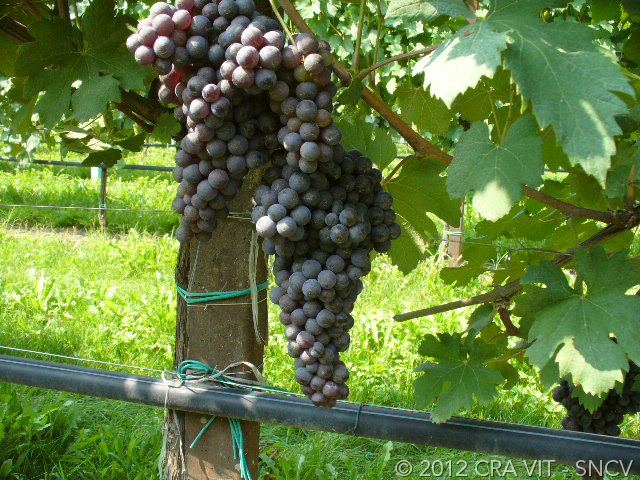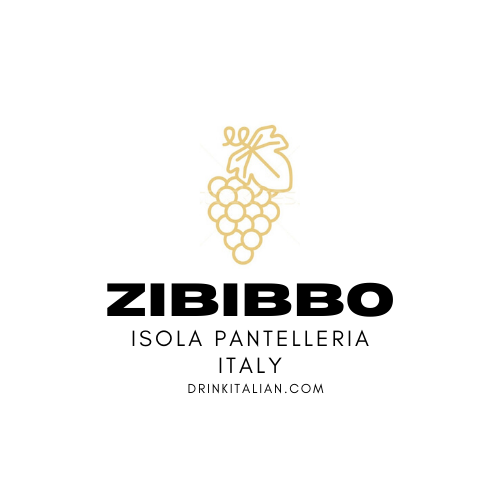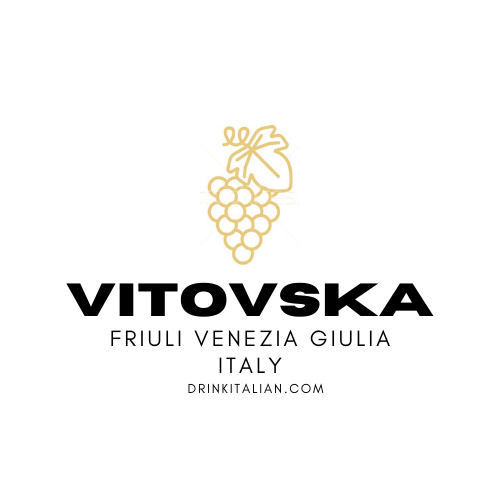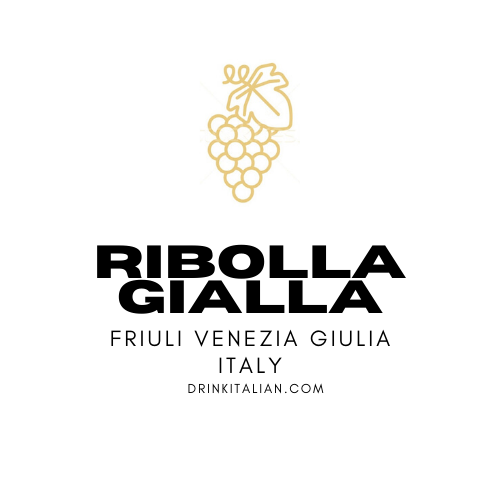Nebbiolo is considered one of the greatest Italian red grape varieties. Its name probably comes from the word Nebbia, fog in Italian. Everybody knows that Nebbiolo grows in Piedmont, it actually grows also in other region but it is also given different names. The most important synonyms are Chiavennasca in Lombardy, Picotener, or Picotendro in Valle d’Aosta. It is also called Spanna around Novara and Vercelli in Piedmont.

Table of Contents
What Is the Nebbiolo Grape?
The Nebbiolo grape is one of Italy’s most prestigious red grape varieties, best known as the foundation of the iconic Barolo and Barbaresco wines. With its haunting aromas, high acidity, and assertive tannins, Nebbiolo produces deeply structured wines that evolve beautifully with age. Native to Piedmont, it’s revered for its ability to reflect terroir with exceptional transparency—often compared to Pinot Noir in this regard.
Quick Facts / Snapshot on Nebbiolo Grape
- Color: Red
- Synonyms: Spanna (Alto Piemonte), Chiavennasca (Lombardy), Picotendro (Valle d’Aosta)
- Parentage: Indigenous to Piedmont; exact origins unknown
- Primary Styles: Dry red wines with high tannin and acidity; rare rosé and sparkling examples
- Regions Grown: Piedmont, Lombardy, Valle d’Aosta, California, Australia, Mexico
- Famous DOCG Wines: Barolo, Barbaresco, Gattinara, Roero, Nebbiolo d’Alba
- Aroma Profile: Rose, tar, cherry, truffle, violet
- Wine Body: Medium to full
Origin & History
Nebbiolo’s history dates back to at least the 13th century, with early mentions in texts from the Piedmont region. Its name likely derives from nebbia (Italian for “fog”), referencing either the morning mists of Langhe or the grape’s bloom at harvest. For centuries, it has been central to the winemaking traditions of northern Italy, valued for its aging potential and noble stature.
Synonyms & Genetic Lineage
- Synonyms: Spanna, Chiavennasca, Picotendro, Nebiùl, Nebiolo, Nibiò
- Genetics: Nebbiolo is an indigenous grape with no confirmed parentage, but DNA studies suggest distant relationships with Freisa and other northern Italian varieties.
Where the Nebbiolo grape is Grown (Regions, DOCs, Appellations)
- Piedmont (Italy): Langhe (Barolo DOCG, Barbaresco DOCG), Roero, Nebbiolo d’Alba, Langhe Nebbiolo
- Alto Piemonte: Gattinara, Ghemme, Lessona, Boca
- Lombardy: Valtellina Superiore (under name Chiavennasca)
- Valle d’Aosta: Labeled Picotendro
- International: Grown in California (Paso Robles, Santa Barbara), Australia (Victoria), Mexico (Baja California)
Vineyard Characteristics (Ampelography, Viticulture)
Nebbiolo is an early-budding, late-ripening variety that requires a long growing season to reach optimal ripeness. It thrives on south- or southwest-facing slopes at elevation, with good sun exposure. The vines are sensitive to weather variations and require well-drained calcareous or sandy soils.
- Clusters: Medium to large, pyramid-shaped, moderately compact
- Berries: Small, thin-skinned, prone to rot
- Challenges: Susceptible to spring frost, coulure, peronospora
Climate & Terroir
Nebbiolo is extremely sensitive to terroir, and expresses differently based on soil and microclimate. It performs best in:
- Calcareous marl soils (Barolo and Barbaresco)
- Volcanic soils (Alto Piemonte)
- Steep Alpine terraces (Valtellina) Cool climates with a long autumn allow full phenolic ripening. Foggy mornings, warm days, and cool nights are ideal for preserving aromatics and acidity.
Winemaking & Styles
Nebbiolo is vinified primarily into powerful, dry red wines. Traditional winemaking involves long maceration and aging in large Slavonian oak casks, though modernists may use shorter fermentation and French oak.
- Styles:
- Barolo: bold, structured, earthy
- Barbaresco: more refined, elegant
- Roero: softer, aromatic
- Alto Piemonte: fresher, more mineral
- Valtellina: alpine, savory
- Aging: Minimum 3 years for Barolo (5 for Riserva), though top wines age 20+ years
Wine Profile: Tasting Notes & Structure
- Color: Pale garnet, often deceptively light
- Aromas: Dried rose, tar, cherry, leather, anise, truffle
- Palate: High tannins, high acidity, medium to full body
- Finish: Long, dry, savory; gains complexity with age (dried fruit, mushroom, tobacco)
Food Pairings & Occasions
Nebbiolo’s firm structure makes it ideal with rich, hearty dishes:
- Braised meats (osso buco, brasato al Barolo)
- Truffle-based dishes
- Aged cheeses (Toma, Castelmagno, Parmigiano)
- Wild mushroom risotto
Legal Status & DOC/DOCG Uses
- DOCGs: Barolo, Barbaresco, Gattinara, Ghemme, Roero, Valtellina Superiore
- DOCs: Nebbiolo d’Alba, Langhe Nebbiolo, Coste della Sesia, Canavese
- Rules: Strict aging and yield regulations protect quality; often 100% Nebbiolo required
Similar Grapes & Confusions
- Pinot Noir: Often compared for transparency to terroir and color, but Nebbiolo has more tannin
- Sangiovese: Similar acidity and food-friendliness, but Sangiovese is softer and more fruit-forward
- Freisa: A distant relative, sometimes blended historically with Nebbiolo
Noteworthy Producers / Wines to Try
- Barolo: Giacomo Conterno, Bartolo Mascarello, Vietti, Elio Altare
- Barbaresco: Gaja, Bruno Rocca, Produttori del Barbaresco
- Alto Piemonte: Le Piane, Nervi-Conterno
- Valtellina: Ar.Pe.Pe., Nino Negri
- New World: Palmina (California), Pizzini (Australia)
Market Trends / Availability
According to recent keyword research, “nebbiolo wine” garners 8,100 monthly searches in the U.S. alone, indicating strong interest. Though still niche outside Italy, high-quality Nebbiolo from lesser-known appellations (like Langhe or Alto Piemonte) is gaining traction for its relative affordability and food-pairing potential.
Why Drink It / Cultural Notes
Nebbiolo is the essence of Italian wine tradition: complex, age-worthy, and rooted in place. Whether sipping a young Langhe Nebbiolo or cellaring a Barolo for decades, this grape offers a deep connection to the hills, fog, and culture of Piedmont. For the thoughtful drinker, Nebbiolo rewards patience with unforgettable depth.
FAQs on Nebbiolo grape
Is Nebbiolo a dry wine?
Yes, Nebbiolo is nearly always vinified dry, with firm tannins and no residual sugar.
What does Nebbiolo taste like?
Expect rose, tar, cherry, and earthy notes with gripping tannins and bright acidity.
Where is Nebbiolo grown?
Primarily in Piedmont, but also Lombardy, Valle d’Aosta, and small plantings worldwide.
Is Nebbiolo like Pinot Noir?
They share some elegance and terroir expression, but Nebbiolo is more tannic and age-worthy.
Can Nebbiolo age?
Absolutely—many of the finest Barolos and Barbarescos improve over decades.
Please come back soon to learn more about Italian wines, spirits, and non-alcoholic beverages.
Send us an email if you want to suggest edits, or if you are looking for more info, at
cheers@drinkitalian.com
Two of the best books about Italian grapes, where some of this information comes from, are:
– Native Grapes of Italy, by Ian d’Agata
– Italian Wine Unplugged, by Steve Kim
Additionally, you can discover the other grapes from Piedmont.


